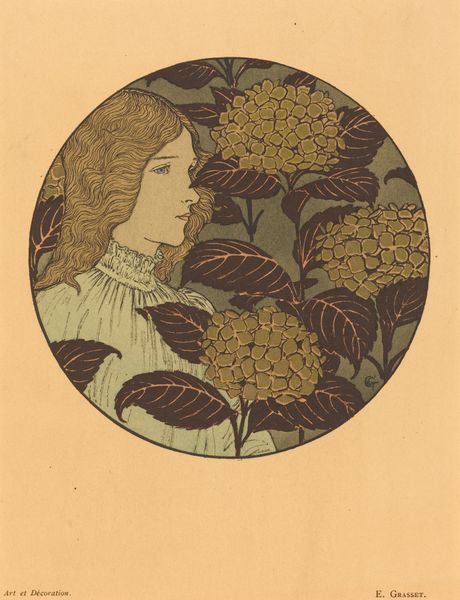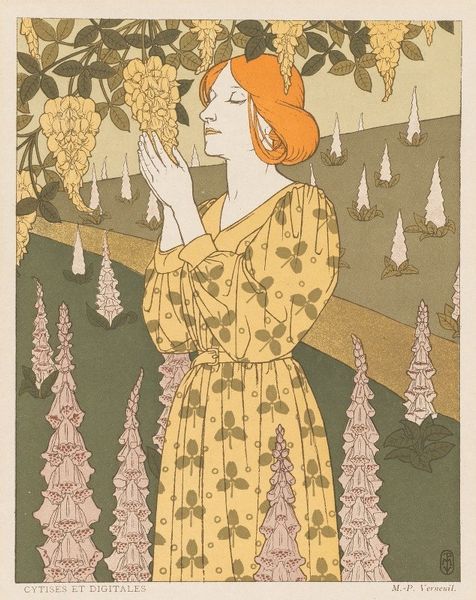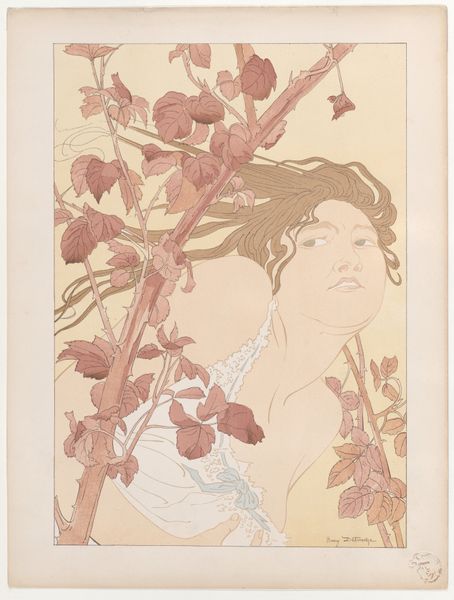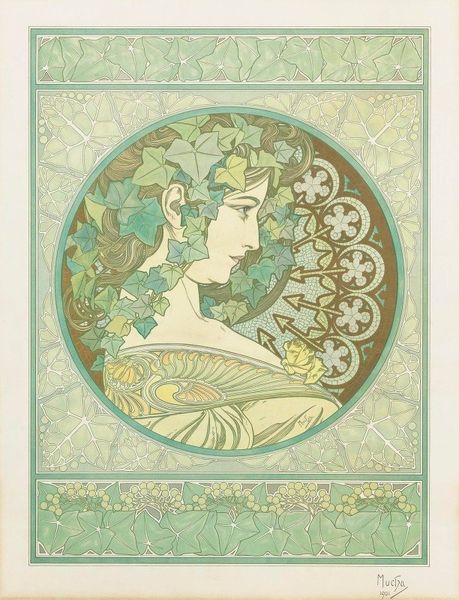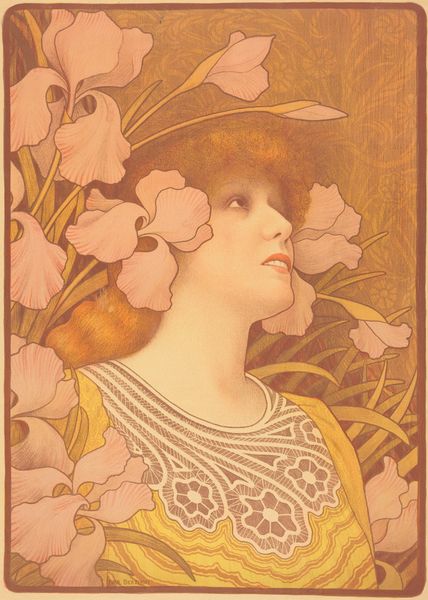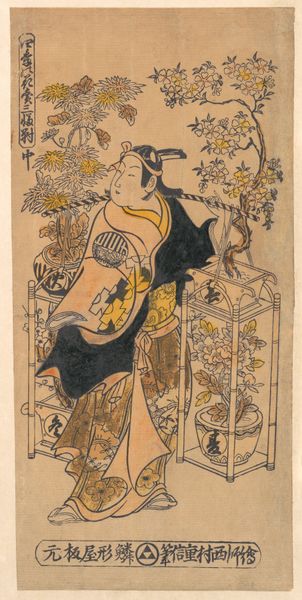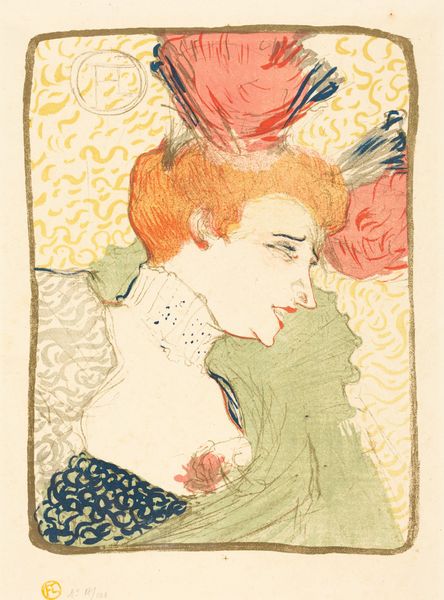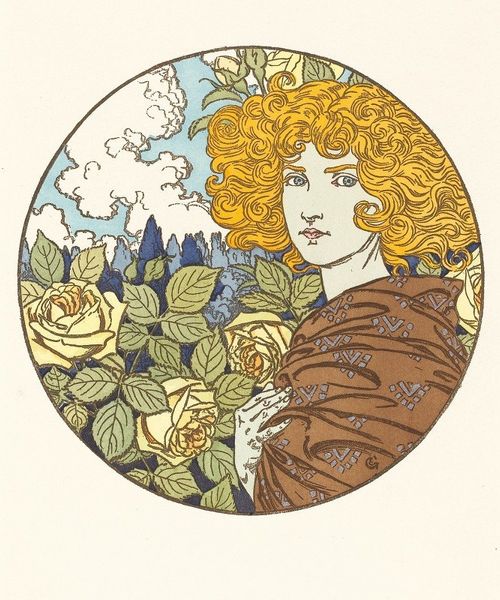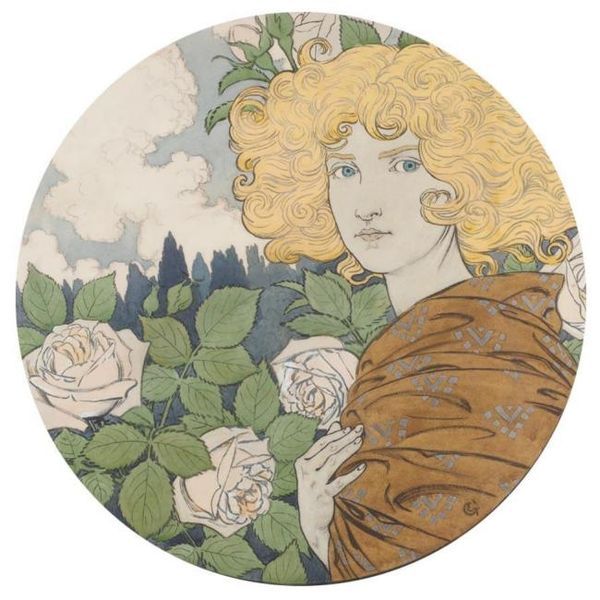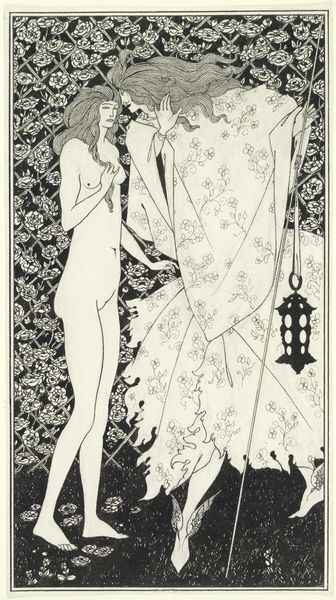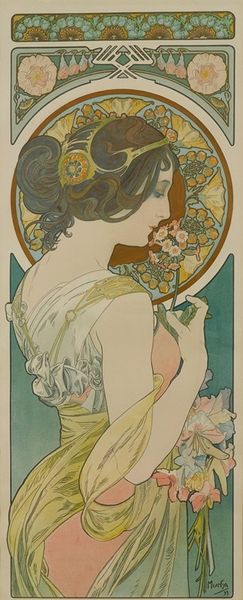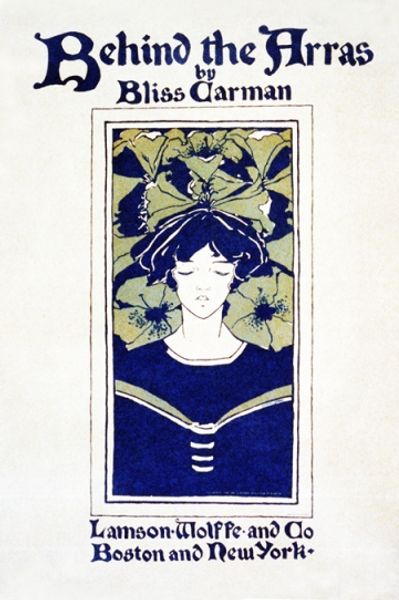
lithograph, painting, print
#
portrait
#
art-nouveau
#
lithograph
#
painting
# print
#
dog
#
traditional media
#
landscape
#
flower
#
feminine colour palette
#
flat colour
#
symbolism
#
watercolour illustration
#
genre-painting
Dimensions: height 399 mm, width 306 mm
Copyright: Rijks Museum: Open Domain
Curator: Here we have "Dame met edelman en hazewindhond bij een rivier," or "Lady with nobleman and greyhound by a river," a lithograph crafted in 1897 by Georges de Feure. It’s currently housed in the Rijksmuseum. Editor: The colour palette feels almost dreamlike, and there's this incredible flatness, like a watercolour illustration trying to escape the confines of the paper. What strikes me is the woman's gaze—both alluring and strangely melancholic. Curator: It's an intriguing piece of Art Nouveau and Symbolist design. De Feure often depicted women in enigmatic settings. Think of this work in relation to the period: shifting social roles and burgeoning feminine power became a topic ripe for visual exploration. Editor: Exactly! It feels like it captures that turn-of-the-century tension perfectly. Is she powerful, poised on the cusp of change, or trapped within these heavily stylized conventions, bound by the male gaze? The symbolism suggests layers beyond the surface. Curator: Notice the idealized forms typical of Art Nouveau, almost like she and her surroundings are motifs repeated from a wallpaper or decorative object. Her ambiguous relationship with the figures in the background adds to this slightly unnerving air. They appear secondary, perhaps only existing to elevate her position as a subject. Editor: And consider that dog, a greyhound, classically associated with aristocracy. It’s almost too perfect a symbol of wealth and privilege alongside her, reinforcing that duality: beauty elevated and scrutinized. It reads as incredibly staged. Curator: Yes, that staging speaks volumes. I'd say that it's that very construction, that carefully cultivated image of womanhood, that the Symbolists sought to investigate. Editor: To me, de Feure presents a complicated portrait. Is he celebrating feminine allure, or is he critiquing the societal structures that necessitate this type of idealization? It’s that friction, the impossibility of a straightforward reading, which I find so fascinating. Curator: I agree. It reflects not just aesthetic choices, but the socio-political debates that continue to reverberate today about how we portray gender, and how images both reflect and shape our understandings. Editor: Ultimately, de Feure leaves us with a tableau that invites us to question the very nature of power, perception, and the eternal dance between appearance and reality.
Comments
No comments
Be the first to comment and join the conversation on the ultimate creative platform.
